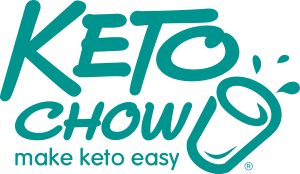What should I eat on the first day of a keto diet?
First of all, congratulations on making it this far. I’m confident you’ll find the keto diet rewarding for your tastebuds and that you’ll reap the benefits to your waistline and your health in no time at all.
One of the most commonly asked questions when someone is just starting keto is: “What in the world do I actually eat?” Today, I will share a few different ideas for what you could eat on your first day on a keto diet.
First, let’s take a look at a sample low-carb menu for your first day:
Breakfast:
Keto Chow flavor of choice
Lunch:
1 cup full fat cottage cheese
1 oz. almonds
1/2 cup asparagus cooked in 1 Tbsp. coconut oil
Dinner:
Cheesy scrambled eggs: 3 large eggs, 1 Tbsp. coconut oil, 1/4 cup shredded cheese
2 slices bacon
As you can see, keto doesn’t need to be complicated or expensive, and it doesn’t require you to be a chef. The best part? You can design your menu around the foods you love. So to get started, think about some of the foods you enjoy that were never allowed in low-fat diet plans. Things like bacon, eggs, sausage, avocado, butter, full-fat dairy, mayonnaise, and nuts are all low-carb, keto-friendly foods.
Then, you can use an app that allows you to log your food. If you aren’t sure which one to use, try Cronometer. It has an excellent food library done for you, which makes things easier in the long run.
As you prepare to begin keto, play around with different food combinations and make yourself a handful of personalized meal plans based on your favorites.
Now, let’s talk about “macros.” Macros refer to the macronutrients of protein, fat, and carbohydrates. We avoid carbohydrates from grains, beans, legumes, fruit, and starchy vegetables on a keto diet.
For the best results in your first few weeks, aim for 20 grams of carbohydrates each day. Eat a moderate amount of protein and a lot of fat. A typical breakdown by percentage of calories would be about 15% carbohydrates, 20-30% protein, and 55%-65% fat. (These numbers may look a little different the longer you’re on keto, but it’s a good place to start.) Feel free to play around with the protein percentage, especially if you’re feeling hungry. And don’t worry about hitting these percentages exactly. The key to success with the keto diet is to treat it as an experiment. Try something different for 14 days and then reflect on your progress and make adjustments.
Here’s some general guidance that I share with clients:
For your first few weeks, avoid a large calorie deficit. Your body is learning how to adapt to the low-carb lifestyle you’ve chosen. It’s normal to feel fatigued and have a headache for the first week or two on a keto diet because your body is learning how to produce ketones and how to run on ketones for fuel. During this time you may experience cravings. Finding yourself daydreaming of your favorite carbs is perfectly normal during this transition period. This is simply your body saying “Hey you! I’m out of glucose. Gimme!” But it’s safe to ignore these demands because your body can and will make its own glucose. It’s just asking you to provide it by tossing some cravings your way. To help with these cravings, and any keto flu symptoms you may see, use a high quality electrolyte supplement like those available through Keto Chow.
Moving your body is just as important in your new healthy lifestyle as it was before. But your first few weeks aren’t the time to start an intense exercise regimen. Instead, focus on supporting your body with daily movement through walking, leisurely bike riding, yoga, stretching, pilates, and/or meditation. If you’re someone who works out intensely already, consider shifting your focus to strengthening your body in other ways. Pilates, yoga, and meditation are all challenging and can help you improve your intense workouts over the long run.
After a few weeks on the keto diet, you can introduce a caloric deficit and sustain a normal energy level—or you can ramp into a more challenging workout plan. I recommend choosing one of these two options after a few weeks and then adjusting your plan biweekly based on how you are feeling in your body.
Looking for some more ideas? View my easy one-week meal plan for more ideas.









